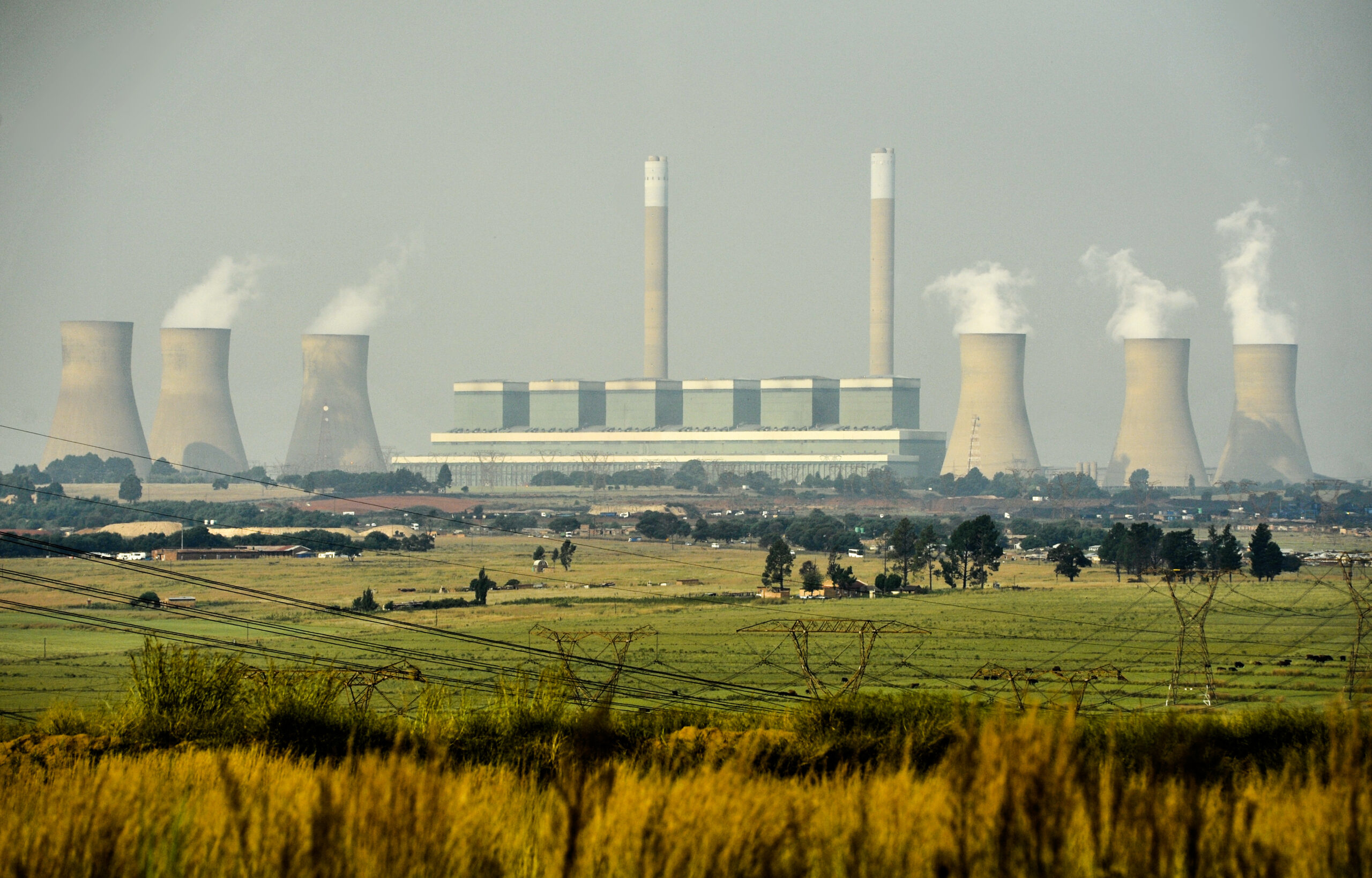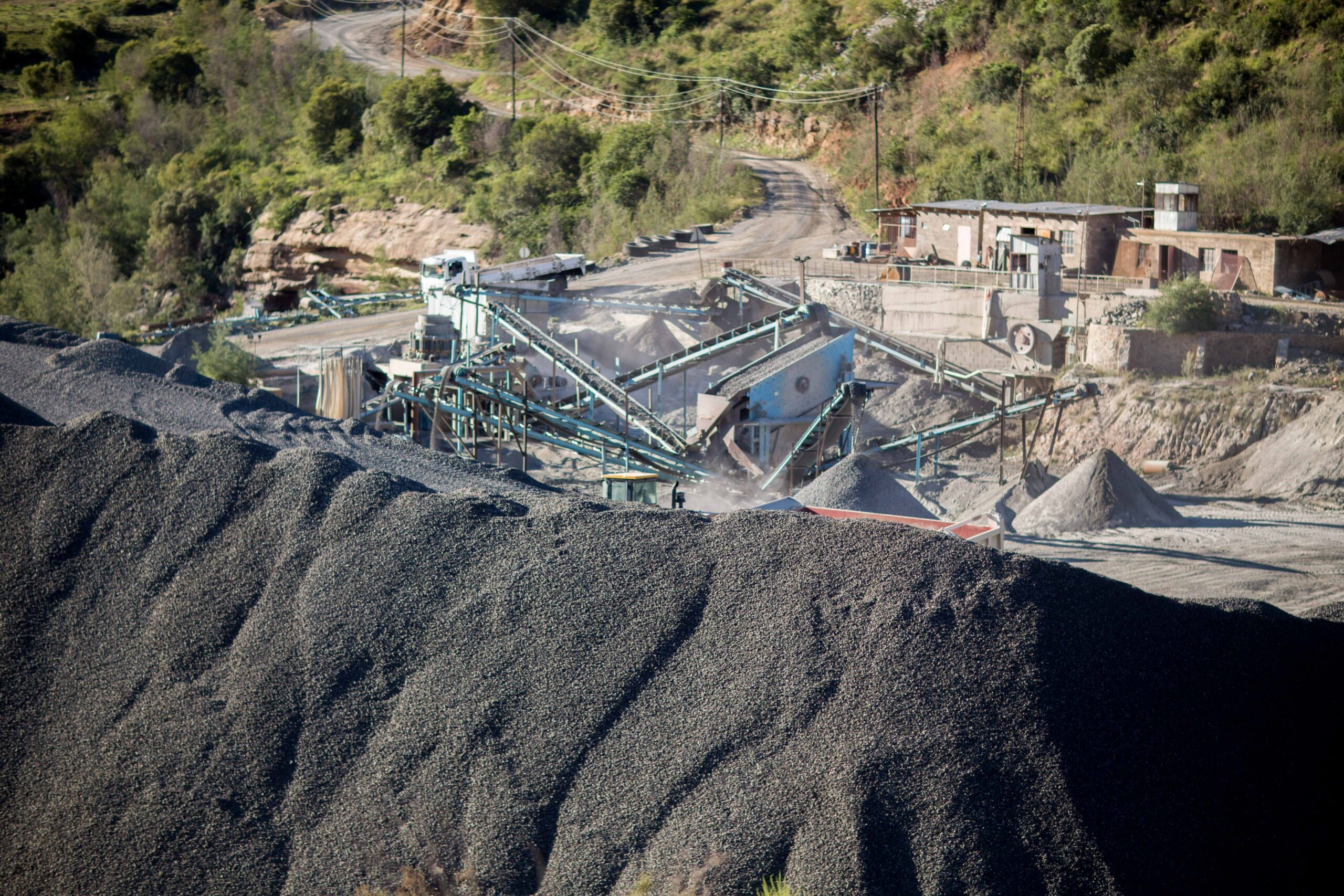The many uses of compressed natural gas (CNG)
Compressed natural gas (CNG) is natural gas that has been compressed to less than one per cent of its volume. The gas is compressed when it is stored at very high pressures. It is used as an alternative to petroleum, diesel or propane fuel. Like natural gas, CNG mainly consists of methane. It is different to liquefied natural gas (LNG), which is natural gas in a liquid form.
In South Africa, CNG is used as an alternative to petroleum or diesel in the transport sector. The most recent figures from the Industrial Development Corporation, a governmental body that is trying to grow the use of CNG vehicles in South Africa, indicate that there were 300 CNG vehicles on South Africa’s roads in 2014. More vehicles have been added to South Africa’s public transport sector, so the figure is likely much higher now.
Like natural gas more broadly, CNG is a cleaner fuel than petroleum or diesel.
CNG compared to other types of fuel
CNG, LNG and liquid petroleum gas (LPG) all have similar uses. However, their chemical makeup and storage requirements mean that they differ in terms of their optimal usage and storage.
LNG undergoes a more complex method of production than CNG. CNG, being easier to produce, can easily be produced at vehicle fueling stations. On the other hand, LNG is less suited for this because it needs to be stored in cryogenic tanks at extremely low temperatures. Rather, LNG is better suited for transporting large amounts of natural gas over large distances in the absence of pipelines.
While CNG and LNG consist of mostly methane, LPG is made up of butane and propane, which are both highly flammable. LPG and CNG are stored and transported in tanks. LNG is a good way to transport natural gas where pipelines don’t exist, using trucks or specially modified ships. However, it must be contained in special cryogenic tanks or storage facilities, driving up the costs of production. CNG is primarily used in vehicles while LPG is typically used in the industrial and agricultural sectors, as well as for home cooking and heating. LNG is used for larger-scale, industrial uses and infrastructure.
From a cost perspective, CNG is more economical than petroleum or diesel. That is because the cost does not fluctuate with the cost of oil or petroleum.
Uses of CNG
CNG is used primarily as a fuel alternative to petroleum or diesel in vehicles. It is cleaner than burning petroleum or diesel and, as stated above, it is easy to produce at fueling stations. Natural gas produces far fewer emissions than diesel or petroleum when burned. Natural gas, in both CNG and LNG forms, emits about six to 11 per cent lower levels of greenhouse gases than petroleum or diesel, according to research by the US Department of Energy’s Office of Energy Efficiency and Renewable Energy.
In the context of vehicles, the emissions from natural gas come from fuel leakage during the fuel production phase. Emissions from diesel or petroleum, however, come from fuel combustion in the vehicle’s engine. CNG production emits fewer greenhouse gases than LNG. This is because it takes less energy to compress gas than to liquify it.
CNG can also be used as an alternative to liquid petroleum gas (LPG) in domestic appliances, like cooking or heating. There are a few CNG car models available in South Africa. Some CNG trucks are also available.
CNG uses in transportation
CNG can be used to power natural gas vehicles, as well as vehicles that use both natural gas and petroleum or diesel (bi-fuel vehicles).
Unfortunately, CNG vehicles have a shorter driving range than those powered by petroleum. This makes it difficult to drive them over long distances. They are ideally suited for in-city transport and public transport, like buses. However, bi-fuel cars – those which can switch between petroleum and CNG – could solve this problem.
CNG as a fuel in cars is cheaper than petroleum or diesel, although CNG powered vehicles are more expensive, according to research by the Belgian Electricity and Gas Regulatory Commission. CNG cylinders tend to take up more space than gasoline or diesel tanks.
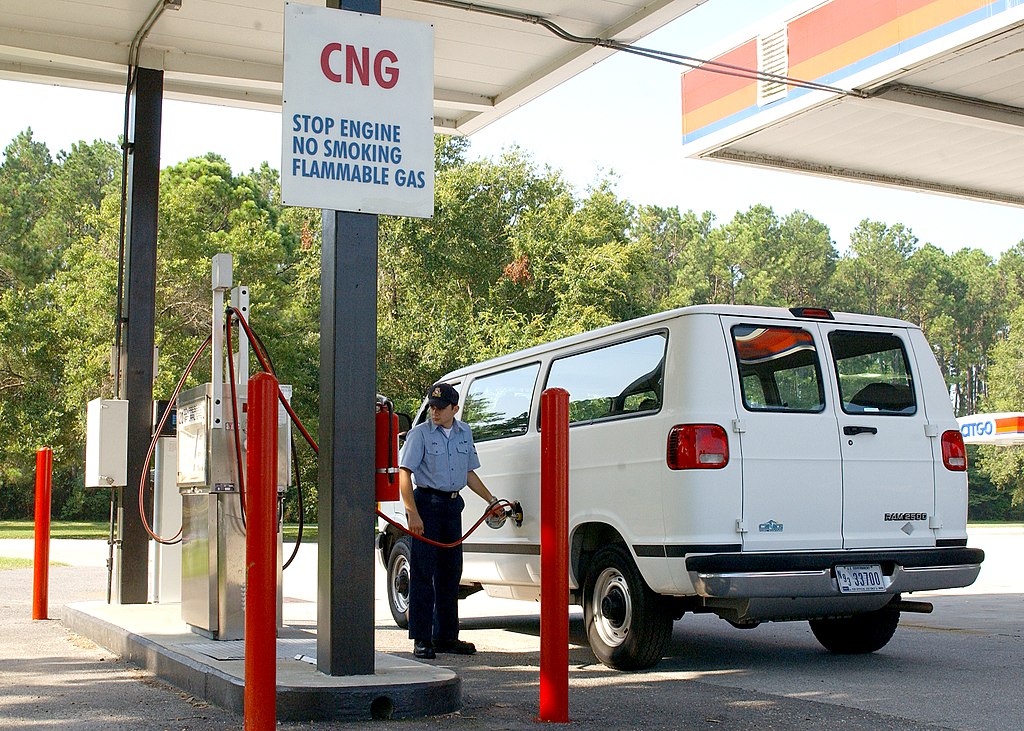
LPG vs CNG
As LPG and CNG differ in their chemical make-up, this has an impact on their levels of safety. Given that CNG consists of methane, which is lighter than air, CNG dissipates quickly if released into the air. While LPG is made up of propane and butane, which do not dissipate so easily. Also, CNG does not ignite as easily as LPG. CNG, and natural gas in general, needs to be at a temperature of 600°C to ignite, while LPG ignites at 450°C.
Therefore, LPG is highly flammable. It forms a large cloud of gas when it leaks, which can settle in low-lying spaces, like drains. While LPG is not toxic, it can result in illness if it is inhaled in large enough quantities.
CNG’s environmental impact
CNG is a form of natural gas, which is a fossil fuel, so it is not a clean technology. But, it is cleaner than other fossil fuels, like burning petroleum or diesel. As a transport fuel, CNG is more environmentally friendly in cars that use petroleum. It is less so in vehicles that use diesel.
CNG-powered vehicles emit less carbon dioxide than petroleum-powered ones. This is not the case for diesel powered cars. But, CNG powered vehicles emit less nitrogen oxide and soot than diesel powered ones. CNG powered vehicles may be beneficial for air quality in cities that use diesel powered buses.
CNG is also less environmentally hazardous than electric cars. Electric cars pull their power from the national grid and would therefore contribute to the overall greenhouse gas emissions of the grid.
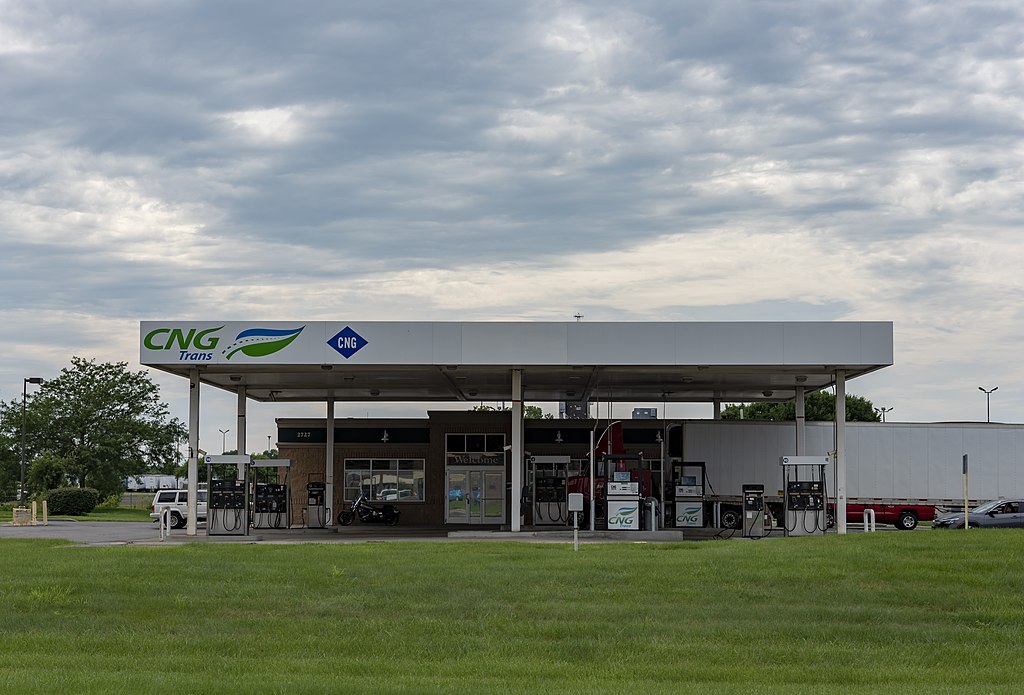
CNG uses in South Africa
As stated above, some CNG vehicles are used in South Africa. However, their rollout is limited by the lack of CNG infrastructure. Currently, CNG fueling stations are only available in Gauteng and a few other provinces.
The CNG and LPG market in Africa is expected to grow by at least three per cent in the next five years. Egypt is the market leader on the continent, with 280,000 cars currently using CNG technology. In South Africa, CNG technology is in use commercially, as well as in industry and public transport. Johannesburg also became one of the first sub-Saharan cities to run a duel-fuel fleet when 180 buses of the municipal bus operator were converted from diesel to diesel-dual-fuel systems in 2019.
Future of CNG in South Africa
South Africa’s Gas to Power Programme envisages that gas will account for 35 per cent of the country’s electricity supply by 2030. However, the country suffers from a shortage of domestic gas supplies. Currently, the gas industry in South Africa is small, with the majority of the country’s gas being imported from Mozambique. But, the industry is expected to undergo a rapid expansion as South Africa’s coal-fired power plants go offline due to their age. With domestic exploration in its infancy, South Africa plans to use both CNG and LNG to import gas.
The IDC currently supports the expansion of natural gas vehicles – CNG in particular. It has partnered with CNG Holdings, a private company, to expand the industry by increasing the number of CNG fueling stations.
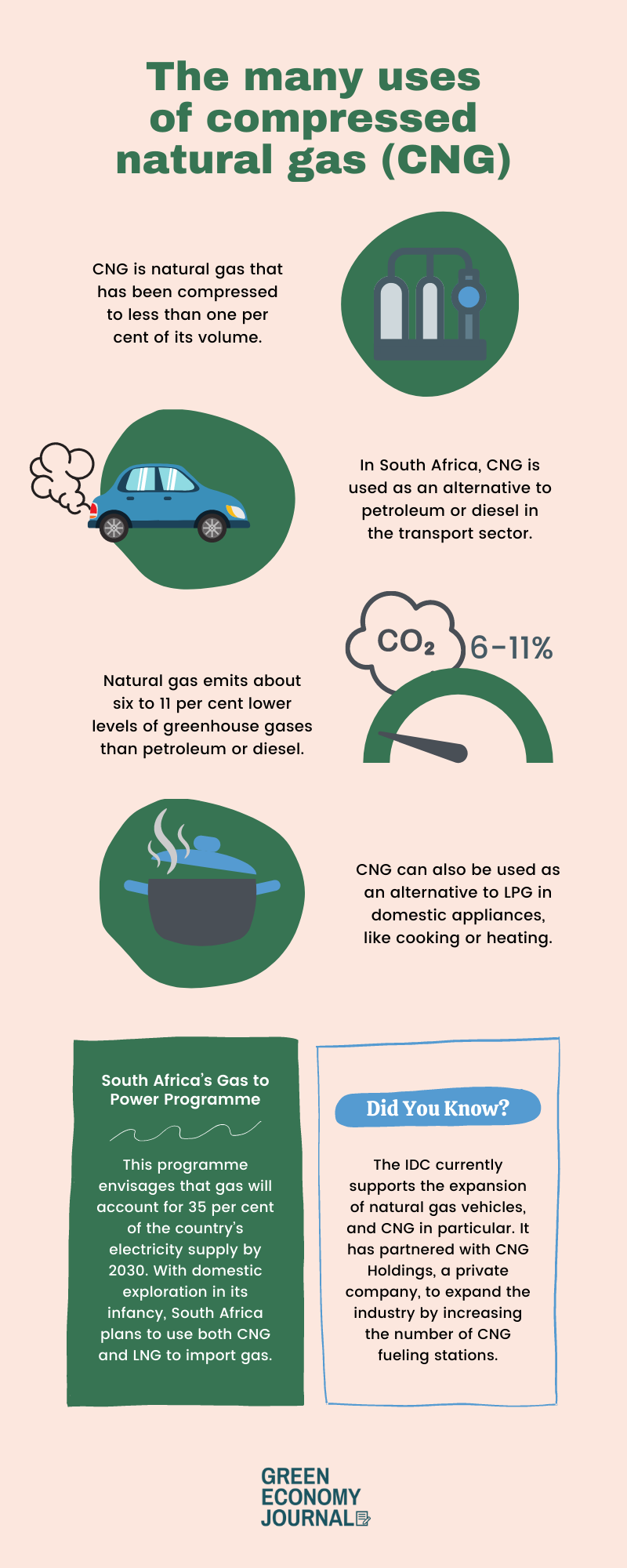
Related Articles
Eskom: Green energy saves water
Generating electricity from fossil fuels has a hidden cost: South Africa’s already scarce supply of fresh water.
The false promise of ‘clean’ coal in South Africa
Even using the cleanest technology available, coal’s severe environmental, health and climate consequences remain unavoidable.

